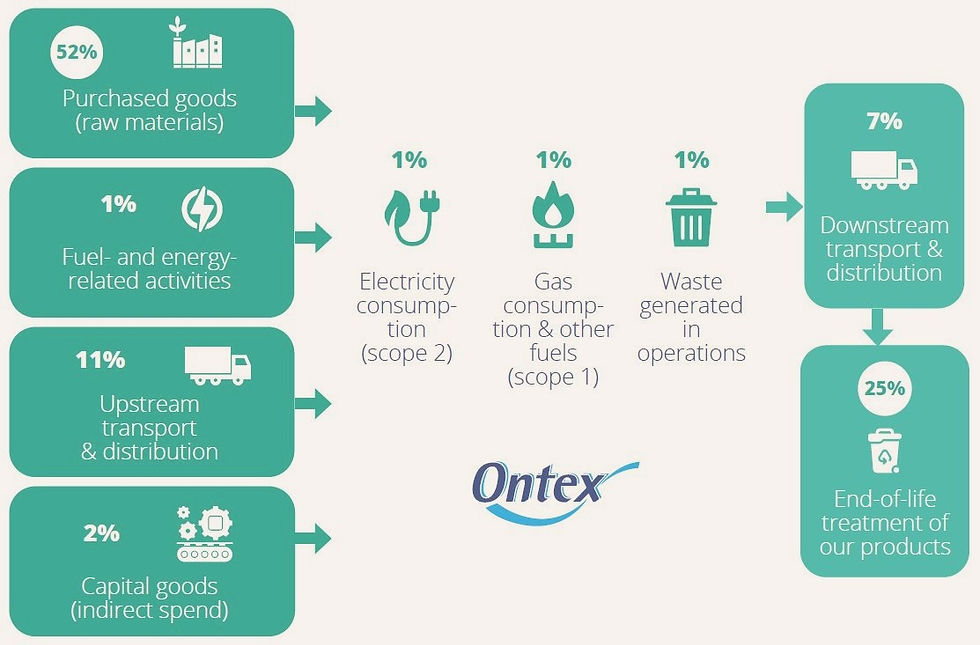Reducing carbon emissions, a shared responsibility
- siddheshkadam3
- Sep 15, 2023
- 2 min read
Updated: Oct 13, 2023

Before identifying ways to reduce carbon emissions, it is important to understand where the emissions come from and the different scopes that are globally used to classify them.

CO2 emissions are not only generated during production, there are a number of other processes in the entire product life cycle that need to be taken into account. From raw materials to transport, packaging, waste management or heating corporate offices…
To help us classify better this emissions depending on their origin, we use a specific terminology:
Scope 1 emissions: these are the emissions that come directly from your workplace’s activities. For example: company cars, gas to heat the plants….
Scope 2 emissions: these come from the energy that your workplace uses. For example: electricity to power the production lines…
Scope 3 emissions: these come from the activities that are not directly under your control but that are related to your operations. This includes emissions from the entire life cycle of the products, such as the production of raw materials, transportation, and waste disposal.
At Ontex we have mapped our climate footprint across our value chain. See below a summarized overview of how the total CO2 emissions are distributed:

From this overview, we can conclude that scope 1-2 emissions only represent 2% of Ontex total carbon footprint. This means that the biggest potential is within scope 3 as these emissions account for 98%. Therefore, we are focussing on our value chain to realize important carbon savings.
We believe that our customers see a similar split within their carbon emissions. As your supplier, we at Ontex are committed to support your scope 3 carbon reduction and that’s why we have set ambitious reduction targets that have been approved by SBTi:
We aim to reduce our scope 1 & 2 emissions by 80% by 2030 compared to 2020 by:
💡 Reducing our electricity consumption
🌞 Completing the transition of all plants to 100% renewable energy by 2030
⚖ Compensating for remaining emissions
We aim to reduce scope 3 emissions by 25% by 2030 compared to 2020 by:
✍ Exploring new designs to reduce material use in our value chain
♻ Choosing to use renewable or recycled materials if possible
🌿 Accelerating supplier commitment to more sustainable practices
🤝 Continuing to develop innovative partnerships to recycle our products
💬 Raising customer awareness and finding synergies with our customer's sustainability goals
Let's continue to work together to reach our mutual carbon emissions goals. Your Ontex representative is at your disposal if you have any questions.


